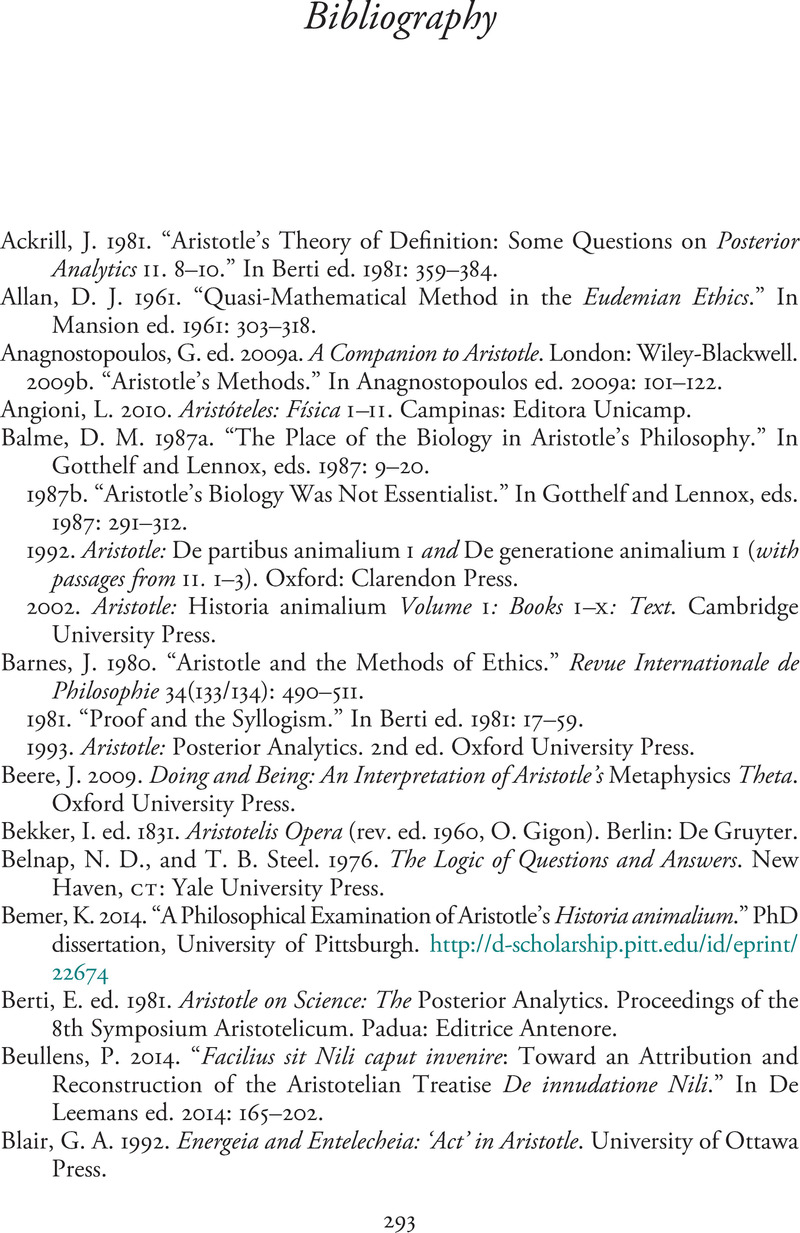Bibliography
Published online by Cambridge University Press: 07 May 2021
Summary

- Type
- Chapter
- Information
- Aristotle on InquiryErotetic Frameworks and Domain-Specific Norms, pp. 293 - 306Publisher: Cambridge University PressPrint publication year: 2021



